Rice is an important part of many meals because it's a complex carbohydrate that provides energy and other nutrients. The region where I live, rice is a staple crop. People can be seen eating rice all 3 times in a day. It is quite strange that even consuming so much, they do not have any health issue. While, when I was in New Delhi, some nutrient expert / Gym instructor asked me to cut rice intake. However, people in village always remain fit and fine even continously relying on rice. The difference is the type of rice that the villagers consume. People in villagers make their own rice from paddy which are more nutritional values. In my region people make their own "Half boiled rice"
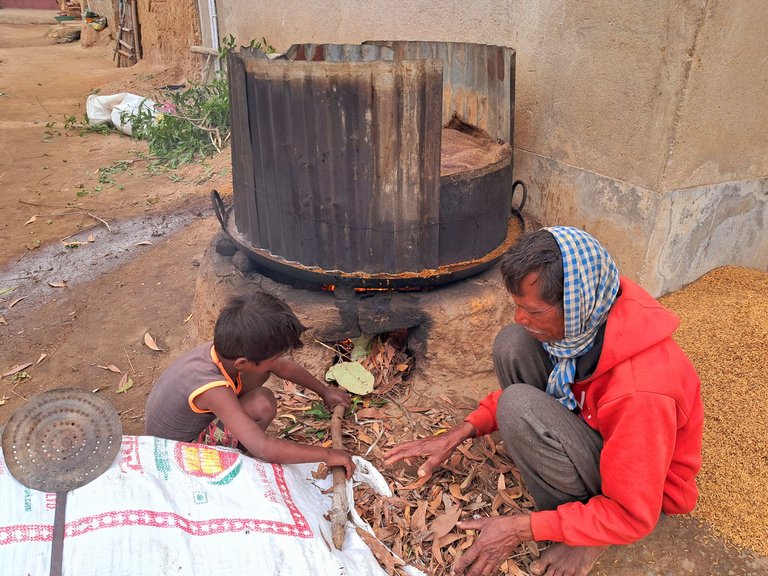
A doctor might ask us to avoid rice, especially white rice, as it considered a refined carbohydrate with limited nutritional value compared to whole grains. Intake of such rice can cause rapid spikes in blood sugar levels, which can be problematic for people with diabetes or prediabetes, and may also contribute to weight gain when consumed in large quantities. This is where Half-boiled rice also known as parboiled rice, is considered good because it retains more nutrients compared to white rice. Parboiled rice differs from other types of rice because it undergoes a partial pre-cooking process while still in its husk. The partially cooked starch in parboiled rice is easier for the body to digest compared to raw rice. It had more nutritional benefits of brown rice while maintaining a firmer texture than white rice. They are more thicker in size.
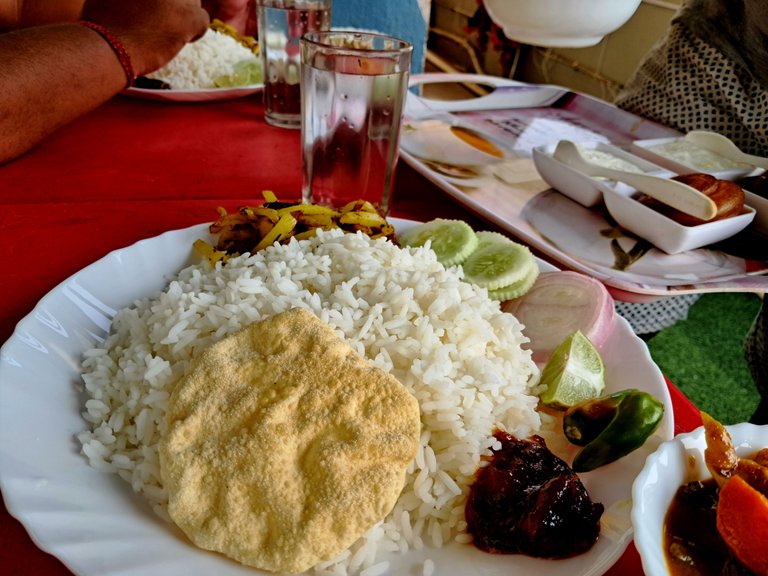
It is so strange that village people still dependent on old traditional way of preparing rice. With limited resources they manage to prepare Half boiled rice for whole year. It is one time process. But does require lengthy steps. "Half boiled rice", is made by partially boiling unhusked rice grains (paddy) in a process that involves soaking, steaming, and then drying the grains.
Soaking:
This is the first step. The paddy is soaked in warm water for a period of time to increase moisture content. It may be overnight before putting it for steaming.
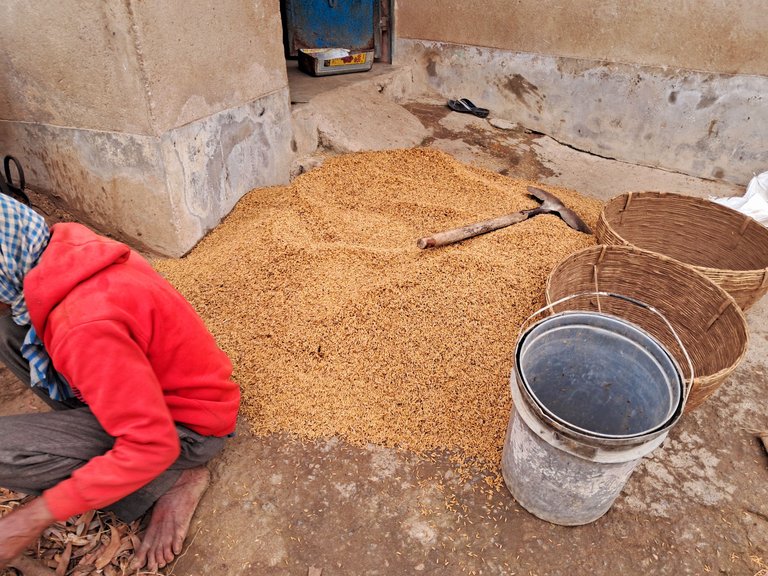
Steaming:
The soaked paddy is then steamed to partially cook the grains, causing the starch to gelatinize and nutrients to move from the husk into the grain. This is make shift stove for steaming. The paddy were covered and dried leaves were put for low flame. This will allow adequate steaming in right temperature.
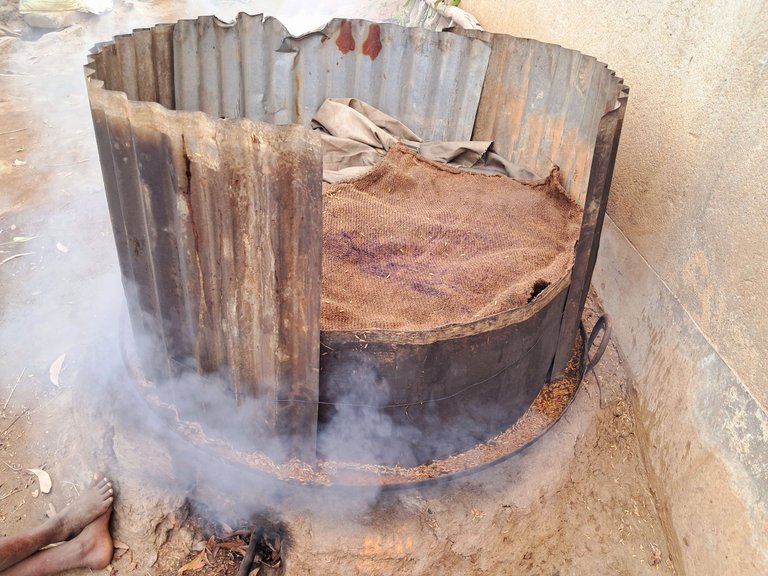
Drying:
After steaming, the rice is dried to reduce moisture content, allowing for further processing and storage. The steamed rice were spread over the terrace or open ground. Before it was grinder in a machine.
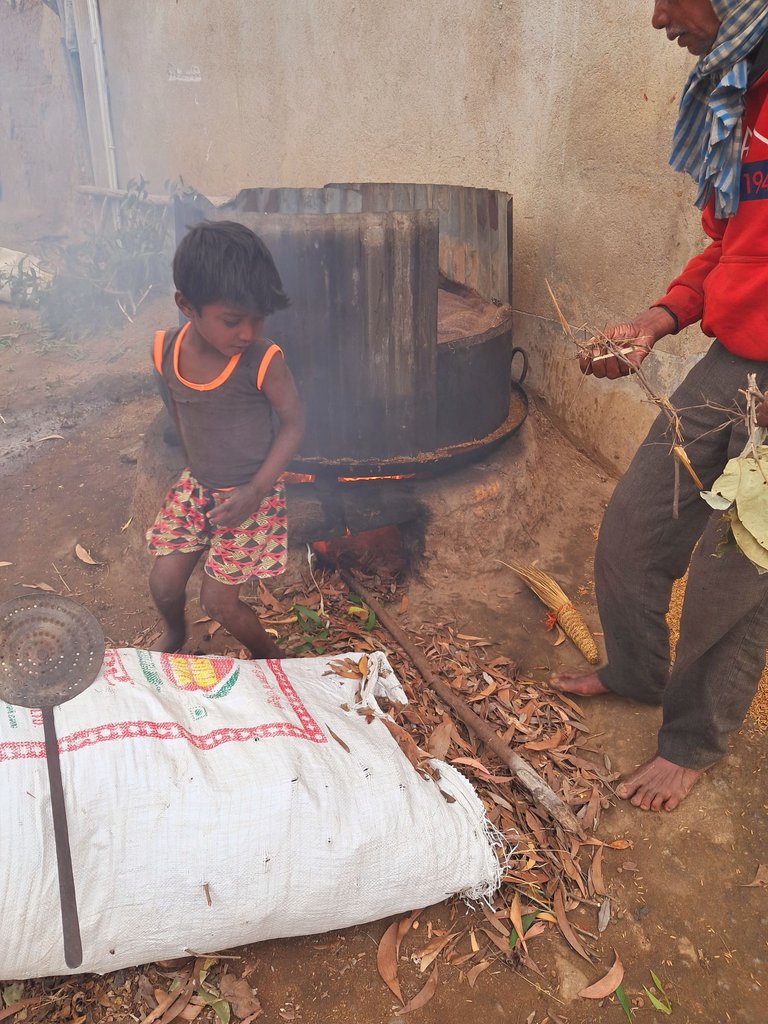
During these days, you can see many people indulging themselves in these activities. This might be the reason that even after dependent on rice the village people avoid all the sugar or indexation issues. There are multiple benefits of parboiling:
Parboiling helps retain more vitamins and minerals in the rice compared to white rice.
The cooked parboiled rice tends to be firmer and less prone to breaking during cooking.
The parboiling process strengthens the rice grains, minimizing breakage during milling.
Parboiled rice is less susceptible to insect damage due to the partial cooking during parboiling. This is why they were kept for longer duration.
During the parboiling process, nutrients from the bran are transferred to the endosperm, making it richer in vitamins and minerals like thiamine, niacin, and iron compared to white rice. The village lifestyle does teaches us so many things. The traditional way are much better than, what we see in todays time. The refined or processed food are not good health. My parents too were relying on home made rice but since we shifted to metropolitan cities, we find it scarce to find parboiled rice. Which leads to manybhealth issue and weigh gain.
This traditional way of preparing rice is good way for healthy tomorrow. I am surprised to find people still relying on these method. There are lot of process before rice could make to our plate, and this traditional approach sounds much better.
Peace!!

Posted Using InLeo Alpha
This post has been manually curated by @bhattg from Indiaunited community. Join us on our Discord Server.
Do you know that you can earn a passive income by delegating to @indiaunited. We share more than 100 % of the curation rewards with the delegators in the form of IUC tokens. HP delegators and IUC token holders also get upto 20% additional vote weight.
Here are some handy links for delegations: 100HP, 250HP, 500HP, 1000HP.
100% of the rewards from this comment goes to the curator for their manual curation efforts. Please encourage the curator @bhattg by upvoting this comment and support the community by voting the posts made by @indiaunited..
This post received an extra 20.00% vote for delegating HP / holding IUC tokens.
Bhai, Ye sab kab meine bachpan mein dekha tha uske baad mauka hi nahi mila.
Thanks for bring back memories.
😀
Hahaha.....Gaon k maje hi kuch or Hai
....
Rice is a stable food everywhere. In here we usually wash all the starch out. That way its more safe for the health and less starchy